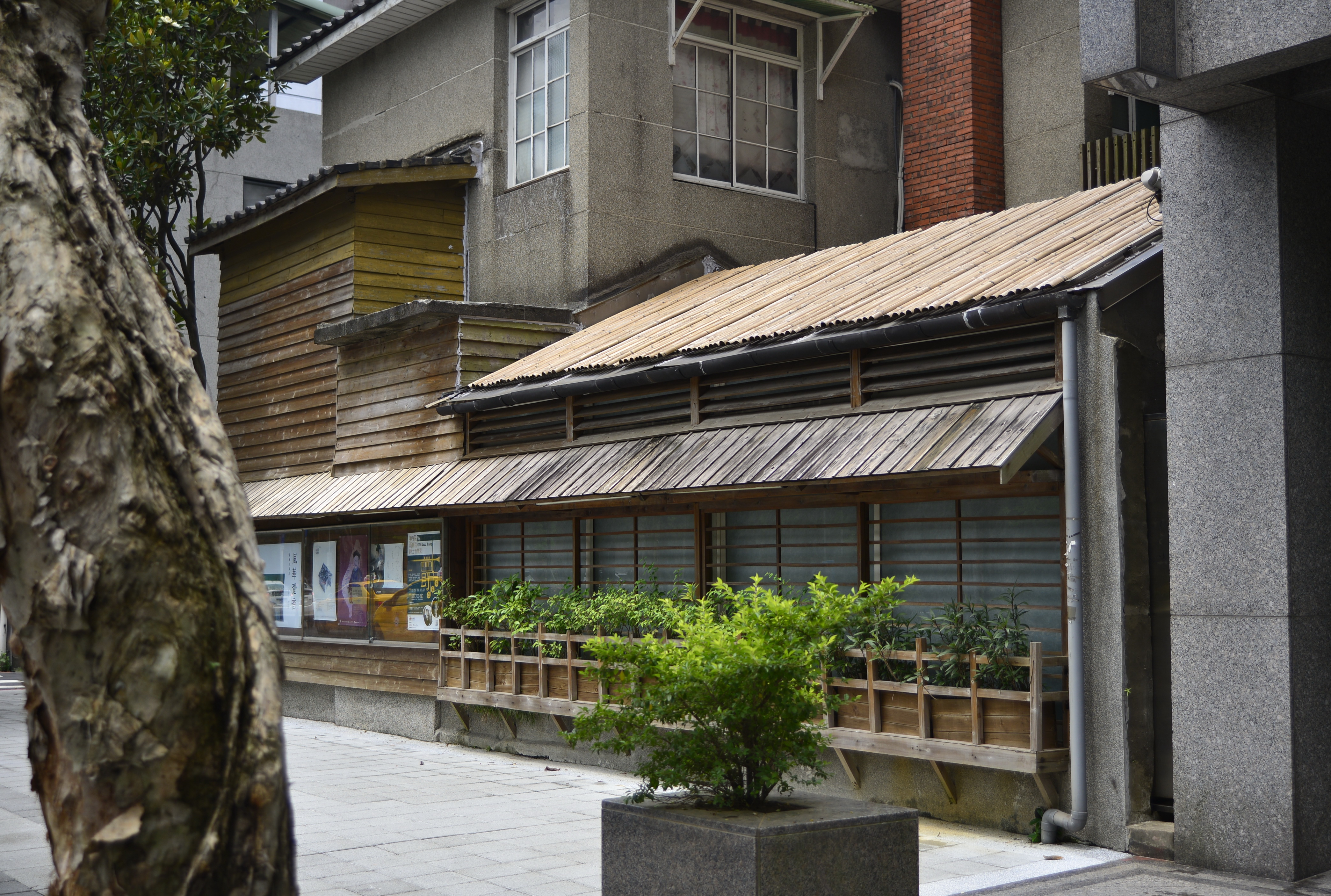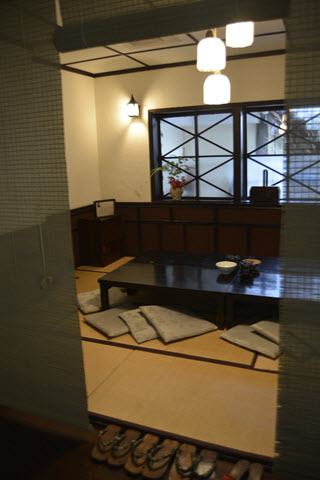
In addition to its unique teas, Taiwan has teahouses of every sort, from Laoren (old man or elder’s) style where common tea leaves are steeped in ordinary drinking glasses or Thermos bottles, to quiet Daoist establishments, to modern environments where mobile phones and laptops and social media are perfectly acceptable.
During Japan’s 50-year occupation of the island, Japanese architecture, design, and artistic sensibility influenced the educated elites in Taiwan society, who came to admire and emulate the sensibilities while resisting Japanese domination. There was kōdō, the Way of Fragrance; kadō, the Way of Flowers; and chadō, the Way of Tea.
There are teahouses in Taiwan that owe a cultural debt to Japan but are representative of native Taiwan genius as well. No teahouse signifies this more than the Wisteria in Taipei, just steps from the National Taiwan University.

The plain façade of wood siding, added to the front of this Japanese home decades ago, shields it from the noise of the city. A wrought iron gate opens into a secret garden, with its koi pond and carefully laid flagstone walk protected by a vine-covered trellis, like a prelude to a Japanese tea hut but more casual. The interior wood flooring is worn, clean, and highly polished, and the casual assortment of wood tables are welcoming. White-washed walls are hung with paintings that are beautiful but not ostentatious. Bamboo screens and tatami mats grace private tearooms off the central dining room and upstairs.
The building was previously a Japanese colonial residence in the 1920s and for a time served as the official abode of the Japanese Governor-General of Taiwan. In 1945, with the retrocession of Taiwan by Japan, the structure was then taken by the Nationalist government. In the mid-1960s, academic and political activist David Chou managed to take over the building as his home, studio, and gathering place for intellectuals and artists. The house passed in 1966 to Chou’s son, Chow Yu, who continued to play host to the Taipei’s “beat generation.” The government permitted an official change-of-use to “teahouse” in 1981.
Young Chow ran the Wisteria Teahouse with an eye toward aesthetics: Chinese, Japanese, Buddhist, and Daoist. It is Taipei’s oldest “kung fu-style” teahouse, meaning fine Yixing teaware and ceramic gaiwan are used at tables with servings of fine wulong tea.
Mr. Yu is a tea master, artisan, and expert judge of tea quality. Over the years he built close friendships with tea growers all over Taiwan and assembled a treasure trove of top-quality wulong and puer teas. Yu is now semi-retired and lives in the mountains east of the city. His wife, our host Sophie Lin, now runs the Wisteria. The tea-tasting responsibility falls on her able shoulders.
Wandering through the seemingly endless assortment of individualized tearooms, each imperfectly beautiful and inviting, the concept wabi-sabi springs to mind. To that, Ms. Lin retorts: “Oh, that’s so Japanese, much too Japanese!” Perhaps the Chinese term “tsuo,” rusticity, would be more appropriate.
The Wisteria may be part Japanese, or it may be pure Taiwanese or Chinese – or all or none of the above. Without debate, it is a one-of-a-kind house devoted to the appreciation and enjoyment of Taiwan tea, a fact that has earned it an official designation as a national cultural treasure.